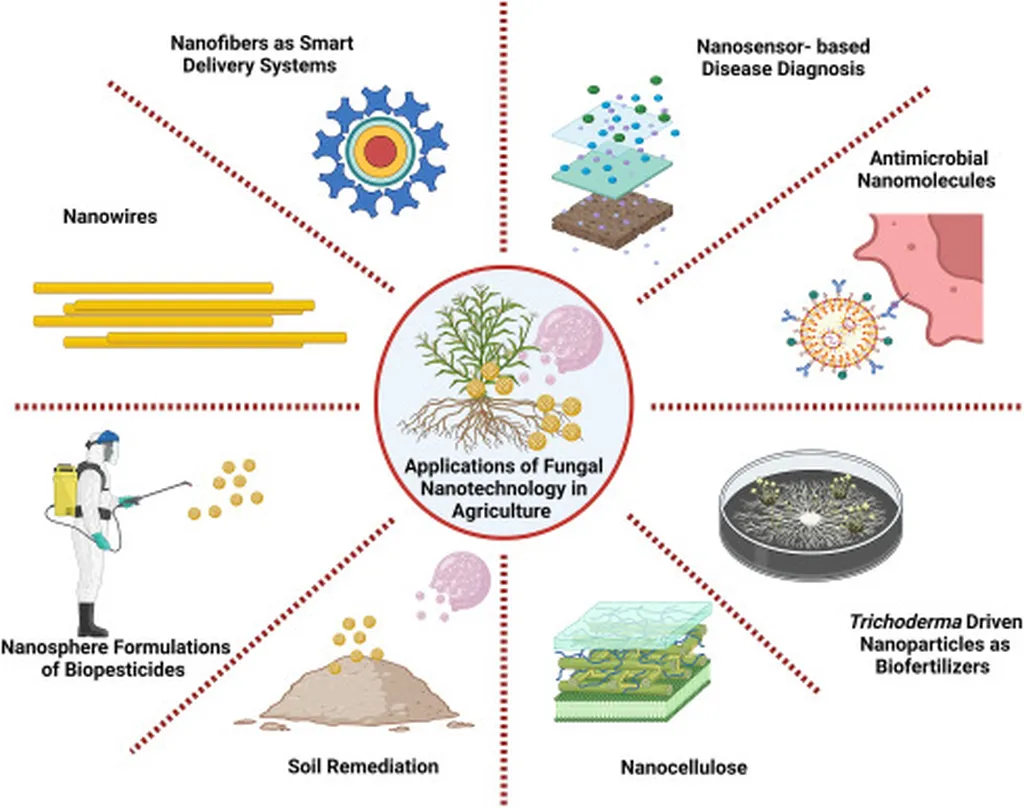In the relentless battle against postharvest fungal pathogens, a beacon of hope emerges from the intersection of nature and nanotechnology. Researchers, led by Masoumeh Vakili-Ghartavol from the Department of Horticulture and Landscape Architecture at Ferdowsi University of Mashhad in Iran, have published a comprehensive review in the *Journal of Agriculture and Food Research* (translated from Persian as “Journal of Agricultural and Food Research”), shedding light on the potential of plant-derived antifungal agents and their nanoencapsulation to revolutionize postharvest pathogen management.
Fungal pathogens are a significant threat to global agriculture, causing substantial postharvest losses and posing risks to food security and human health through mycotoxin contamination. Synthetic fungicides, while effective, come with a host of drawbacks, including toxicity, environmental damage, and the development of resistance. The search for safer, more sustainable alternatives has led researchers to explore the antifungal properties of plant-derived agents, such as essential oils and crude extracts.
However, the practical application of these botanical antifungals is hindered by challenges like volatility, poor solubility, and instability. This is where nanotechnology steps in, offering innovative solutions through encapsulation systems that enhance stability, bioavailability, and controlled release. As Vakili-Ghartavol explains, “Nanotechnology provides a powerful tool to overcome the limitations of plant-derived antifungal agents, paving the way for their effective use in postharvest pathogen management.”
The review delves into the mechanisms and efficacy of these nanoencapsulated botanical antifungals, highlighting their potential as sustainable replacements for synthetic fungicides. The authors emphasize the need for future research to focus on optimizing nanoformulations, scaling up production, and validating field performance. This work not only advances our understanding of the interplay between plant-derived antifungal agents and nanotechnology but also opens up new avenues for sustainable agriculture.
The commercial implications of this research are profound. By developing effective, eco-friendly alternatives to synthetic fungicides, the agricultural industry can reduce its environmental footprint while ensuring food security. The energy sector also stands to benefit, as the reduced use of synthetic fungicides can lead to lower energy consumption in their production and application.
As we stand on the brink of a nanotechnology-driven agricultural revolution, the work of Vakili-Ghartavol and her team serves as a testament to the power of interdisciplinary research. By harnessing the potential of plant-derived antifungal agents and nanoencapsulation, we can look forward to a future where sustainable, effective postharvest pathogen management is not just a dream, but a reality. The journey towards this future, as outlined in the *Journal of Agriculture and Food Research*, is one that promises to reshape the agricultural landscape and secure our food supply for generations to come.

